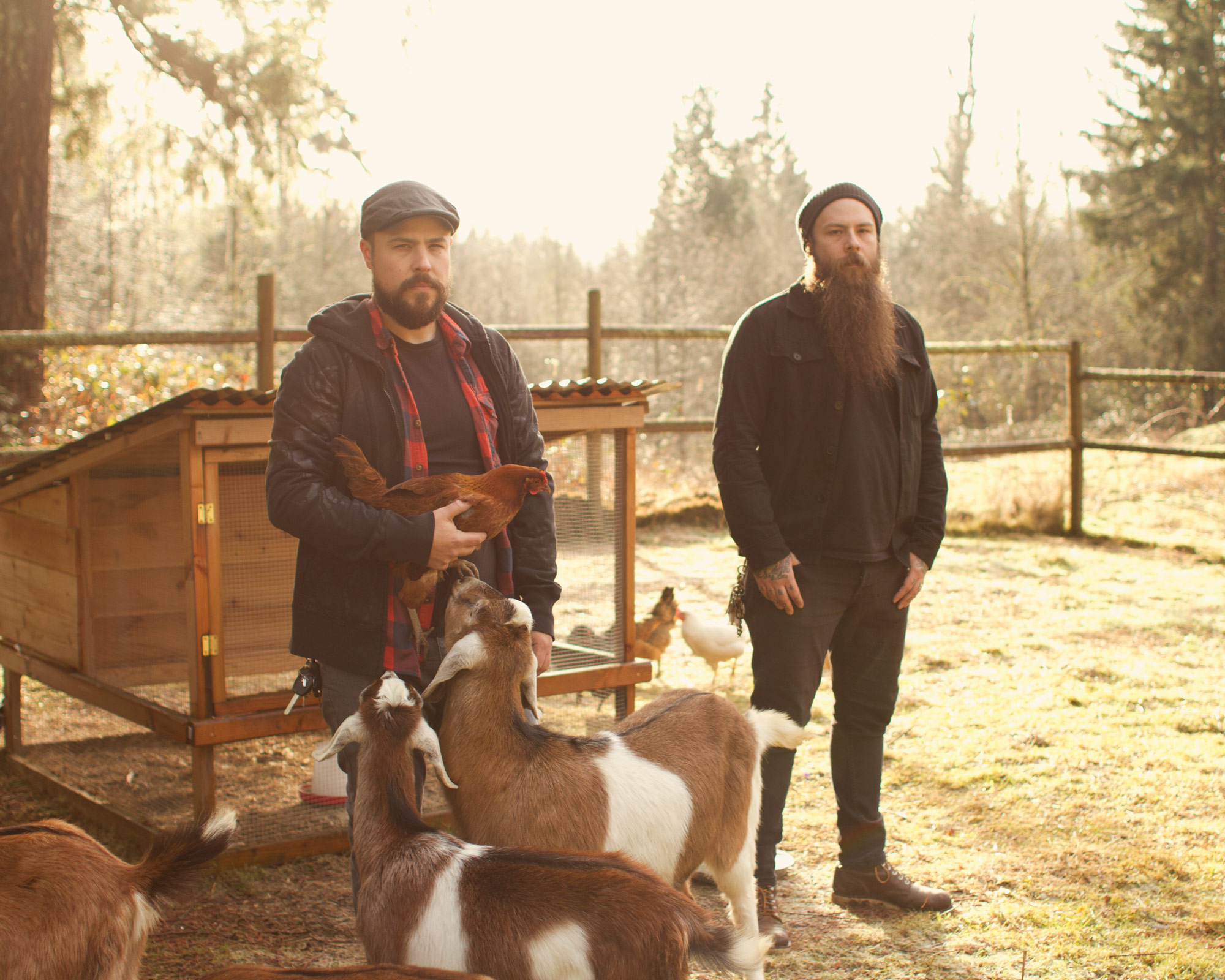
- Interview by Ryan & Tina Essmaker December 24, 2013
- Photo by Invisible Creature
Invisible Creature
- designer
- illustrator
- musician
Founded in 2006, Invisible Creature is a multidisciplinary design and illustration studio in Seattle, Washington. IC has received four Grammy nominations for music packaging, and has worked with clients such as Target, LEGO, Nike, Adobe, XBox, the New York Times, Nickelodeon, and MTV. Their work has been featured in the pages of Print, HOW, Communication Arts, IdN, and Juxtapoz, as well as publications of the hard-bound variety.
Interview
Describe your paths to what you’re doing now.
Ryan Clark [RC]: I’ll let Don go first because he got started in design before I did.
Don Clark [DC]: Ryan and I are four years apart—a lot of people think we’re twins. Despite the occasional headlock, we got along great as kids, and we’re very close now. Our grandfather was an illustrator at NASA and our dad was, and still is, a woodworker—he makes guitars now. Grandpa had an amazing, broad range of styles and, because of him, the idea that someone could get paid to draw was with us from early on. We grew up wanting to emulate what he did. And like most kids, we loved to draw—
RC: That’s pretty much all we ever wanted to do.
DC: Yeah, we knew we’d make a living in the arts, even though we didn’t know if it would be in music, design, or illustration.
RC: Our parents were really good about putting us in extra-curricular courses. Any time we wanted to take an art class that wasn’t part of our schooling, they signed us up. Birthdays and Christmas gifts were how-to-draw books, Prismacolor pencils, and sketchbooks. Our parents were cool with us wanting to do art.
Tina: How did you actually make the transition from high school to making art for a living?
RC: Both of us took a detour into music. I don’t think we considered visual arts post-high school, although it might have been a fallback somewhere in our minds. I’d had different garage bands with friends, but when I was 14, I started a band that was a bit more serious. We played a bunch of shows and got signed to a label when I was 15—my parents had to sign the contract—and, at 17, I did my first US tour.
Around that same time, Don had also started a band. We were simultaneously playing in bands and not doing much design or art. My band broke up right after we got back from tour; we were way too young to cope with it all, and it was very much a reality check for us. When I got back, Don was still working with his new band, but they had lost their singer, so I joined Don’s band. We were in that band, which was called Training for Utopia, for probably four years, up until around 2000. At that point, we’d done two full-length records and two EPs, three to five tours, and had played lots of local shows. Eventually, the drummer wanted to go back to school, and we were starting to focus on jobs and asking what was next for us—it didn’t seem like the band was going to be that.
Then Don had an opportunity to move up to Seattle for a dot-com job. I’ll let him talk about that.
DC: Like Ryan said, we didn’t know exactly what we wanted to do when we were in high school, but we knew it involved art. We got so immersed in music, and in the hardcore, punk-rock scene—
RC: When a lot of our peers were going to college, we went on the road and into the studio. We completely skipped college, and being in bands was almost our college experience. We made a lot of friends and built relationships that would come back to really start feeding us once we were designing.
DC: We also got married around the same time and there was more responsibility to figure out what was next—you know, our 20s were over. That’s when we took design and the company more seriously. At that point, we already had relationships from music, and we had so many contacts and friends in the industry. When we decided to do design full-time, the natural jump was album packaging because it fused our passions, and we had so many opportunities with friends and labels. That really blew up around 2001.
RC: Yeah, we didn’t really have to reach out; it just snowballed from one job to the next. We’ve never actively sought out work. It was the kind of thing where we worked with a band and then they got signed to a label; then we got in with a major label and their art director; then maybe that art director got laid off or went to another label, so we got in with that label. We’ve followed bands, art directors, and managers, and they’ve kept calling us. It’s been really cool.
“Tooth & Nail was our foundation for setting the stage for our company and lives—we both met our wives at the label. Even now, I think we can thank our career to music and that whole era of punk-rock.” / Don
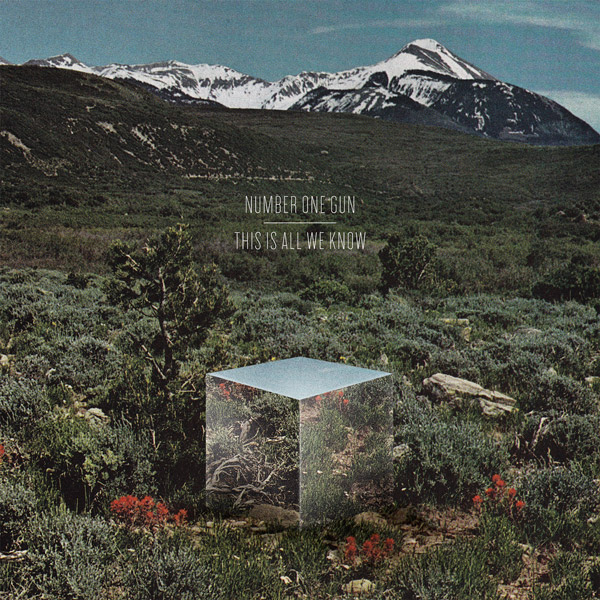
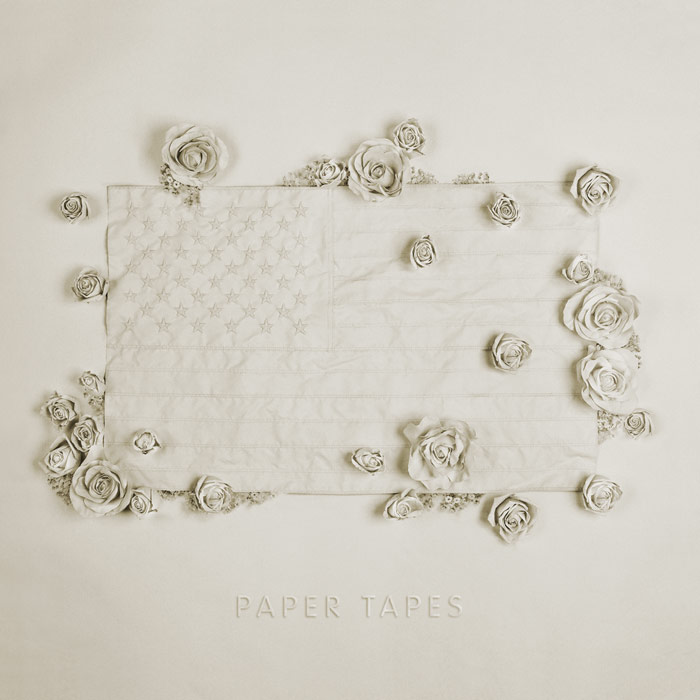
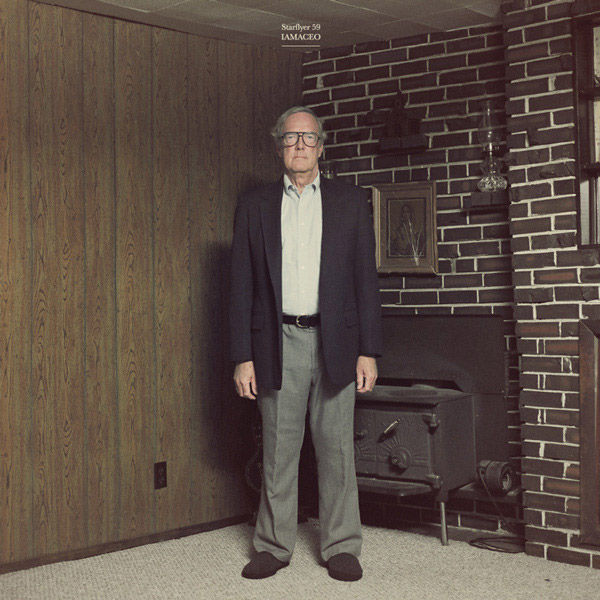
Tina: Did you just open up a shop one day and tell people you were designing?
DC: Yeah, it sounds crazy. In 2001, we went to our friend, Brandon Ebel, who owns a label called Tooth & Nail Records. I told him, “I just got laid off from my job and we want to start a company. What if we did 20 album packages for you, for x amount of money?” It was a deal for both of us; it was a really low budget, but it helped us get our start. Brandon said, “I’d love to help you, but I have an art department already. I just don’t need it.”
RC: The funny thing is that I had just started working in the Tooth & Nail art department, so I was his art department. And there was still so much work to do because it was during the boom when print marketing was transitioning to web marketing, so the good thing is that they really did need the help. I actually worked there for 12 years and just quit about 5 months ago.
DC: Brandon said yes and many of the albums we worked on were for huge bands, and here we were, these new designers who were given a chance. I had done some work for Brandon in the past, but nothing like that. It was a way for us to get our voice out quickly.
RC: It was a dream portfolio building experience because we were given constant, professional work for established bands. Word spread fast about our company, which was called Asterik Studio at the time. We worked with another friend named Demetre Arges, who had also moved up from Sacramento and worked with Don at the dot-com job. He did a lot of interactive design.
DC: This was before Myspace—this was before everything—so we were getting pretty good budgets for band websites. I’d do all the album packaging; Demetre did the websites, and it was great. Then Myspace came along and killed all of that.
RC: On the side, Don and I had started another band called Demon Hunter. We took chunks of time off of design to tour or make a record. That got to be crazy, especially for Don, who was starting to have kids. He, unlike me, was managing Invisible Creature; however, I could come and go as I wanted because I was at Tooth & Nail and the day I got back from tour, I was getting a paycheck again. In 2008, after two years of doing Invisible Creature, Don decided to quit the band.
DC: It was chaos. That’s why I had to step back after eight years. I had to make a decision: am I going to do Invisible Creature full-time? Am I going to be a daddy to my kids? Am I going to be a good husband? It was too much. It’s been about four years since I left the band; now, I can root for Ryan on the sidelines, and it’s been great.
Ryan: I grew up listening to all the Tooth & Nail stuff, but I didn’t realize you guys were in bands. I don’t know why I didn’t know that.
RC: The band I was in before Training for Utopia was Focal Point, and that’s the one that got signed to a label when I was 15.
Ryan: I definitely listened to Focal Point, and I also listened to some of the Training for Utopia stuff. It was all on the Tooth & Nail compilations.
RC: We grew up listening to Tooth & Nail stuff as well. It was our whole lives, and then we started our own bands. We began playing with bands that were on the label; then we became friends and they pitched us to the label. That opened the door for us to get signed.
DC: The evolution has been crazy. Tooth & Nail was our foundation for setting the stage for our company and lives—we both met our wives at the label. Even now, I think we can thank our career to music and that whole era of punk-rock.
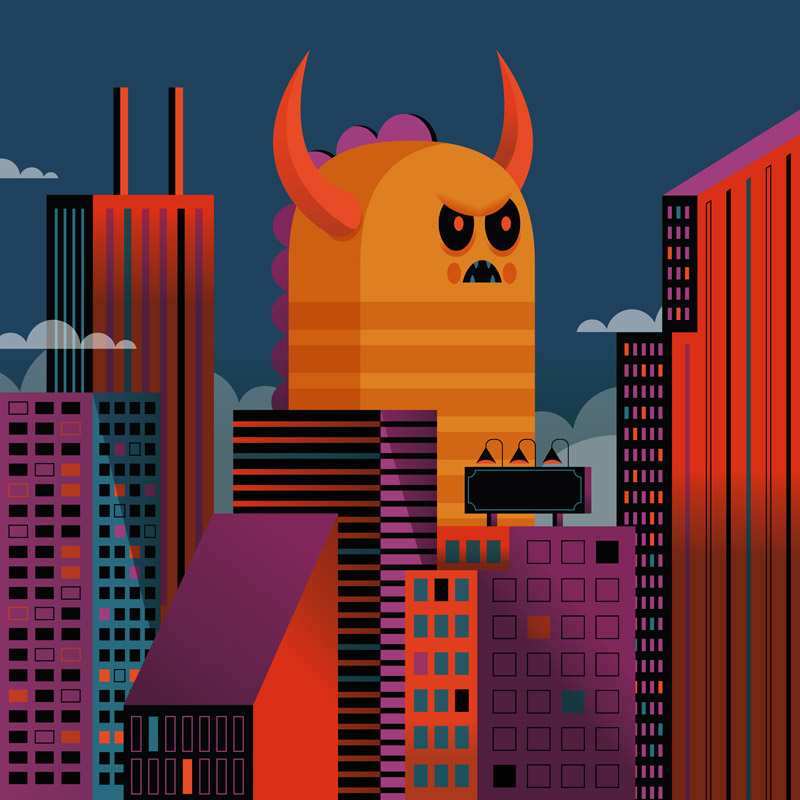

Did either of you have an “aha” moment?
DC: Yeah. At the time we started the company, my wife had a really great job. We were wanting to start a family and were considering the idea of her staying home with the kids. Around 2004, I remember thinking, “We could make this work now—I could be the sole provider and we wouldn’t need daycare.” It was a gradual process to get there, but we were eventually able to make it happen. I was finally understanding how to run a business. When we started, we didn’t know anything about that; we just wanted to design. All of the ups and downs of running a company were new territory.
RC: It wasn’t something either of us were really cut out for, but you learn; I’m still learning. Don’s better at it than me because he’s more of a Type A personality. I’m super low confrontation, like, “Sure, we’ll do it for $5.”
DC: (laughing) We need to add a few zeros to that!
RC: When I started designing, I was forced to talk with clients and fight for things I felt strongly about, so I’ve learned. I mean, my social skills have developed a lot.
DC: Yeah, you get thrown into situations you never thought you’d be in, so you have to be able to sell yourself a little and stand behind your work, and that’s a gradual learning process.
RC: Don had been designing before I was. During high school and after, my art leanings were toward graffiti. I had sketchbooks filled with stuff and I drew a lot, but it wasn’t at the forefront of my mind because music had taken over. When we moved to Seattle, we put an end to Training for Utopia, so there was no real music project on the horizon. I moved up here and worked at a used clothing store while Don was working at a dot-com doing design. Greg Patterson, who was working at the Tooth & Nail art department, said, “I think you could do this.” I knew nothing about anything on the computer; for me, it had always been a sketchpad and pens. Over the course of a couple weeks, he showed me a few things and Don showed me a few things. They talked Brandon into letting me intern at Tooth & Nail. Within less than a year of living in Seattle, I had made the transition into design, which I had no business doing, but I did learn quickly.
Have you guys had any mentors along the way?
DC: We’ve definitely had people in our lives who have opened doors—our grandfather, who I already mentioned, and our dad, who is a luthier and was a pastor when we were growing up.
RC: In small ways, yes. I had mentioned working with great guys in the art department at Tooth & Nail. One was Kris McCaddon, who is still a designer and lives in New York now. When I hired him, he had been working at a company called Bauda, which was in LA. They were known for doing the Marilyn Manson packaging and a lot of that 90s metal and hard-rock stuff, which was really impressive Photoshop work. Kris was a huge help with the technical and surrealistic kind of stuff—compositing and making things look real. He gave me a lot of really good pointers. I’d say that’s as close as it comes to anyone having been a mentor.
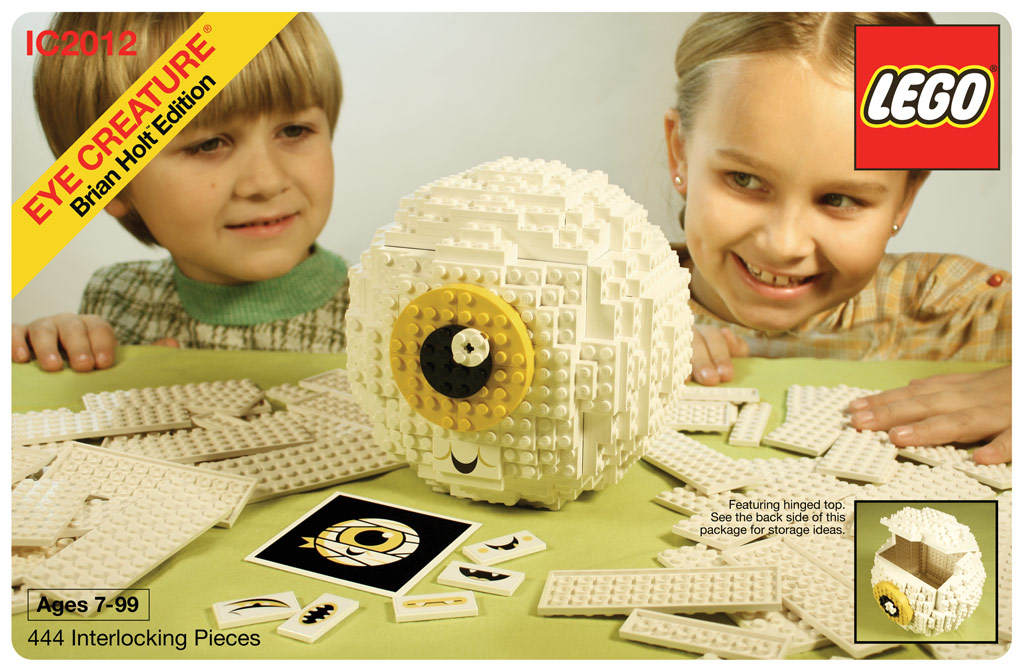
“We’ve been extremely blessed with the work we’ve been given and the projects that have come our way. We haven’t had a whole lot of downtime in 15 years…It’s been a shotgun career and I think we’re still trying to navigate what we’re doing.” / Don
Has there been a point when you’ve taken a big risk to move forward?
DC: When we switched names from Asterik to Invisible Creature in 2006, we’d had pretty big name clients. We made the mutual decision to split off and focus on illustration, packaging, and branding. Asterik was working on a lot of high-budget interactive projects at the time, but that wasn’t what we were passionate about. My fear was that we would lose all of that momentum.
RC: It felt like starting over.
DC: There was a risk in my mind, obviously, but that never happened. Our company exploded even more. We’ve been extremely blessed with the work we’ve been given and the projects that have come our way. We haven’t had a whole lot of downtime in 15 years and we’re extremely thankful for that. It’s been a shotgun career and I think we’re still trying to navigate what we’re doing.
RC: Yeah, there’s been very little time to sit back and think about the journey because we’re in the thick of it. At some point, we’ll get to look back—
DC: We may be on the streets next year!
(all laughing)
RC: For us, the crazy thing is that we were doing nearly 100% music packaging and, as everyone knows, the industry started taking a huge nosedive around 2006 or 2007 when everything started moving into the digital realm, and it’s gotten crazier since then. Luckily for us, we started getting more and more non-music clients as the shift was happening. We still very much have a foot in the music world, but we don’t depend on it to be our bread and butter anymore, which is excellent, because it’s not set up to be that.
DC: This doesn’t answer the risk question, but it is a fear. I feared that we couldn’t sustain a career in music because of what was happening in the industry. At the same time, we were getting calls from retail clients based on a lot of our poster work, which was mostly illustrative.
RC: We started doing posters in 2005, just before we switched to Invisible Creature. Back then, there was a boom; it was almost the final frontier for merchandising. It was something physical to offer fans other than music. The other cool thing with posters, at least for us, is that there wasn’t a lot of outside direction, so it allowed us to do what we wanted, with very little constraints. We used that as an opportunity to flex our creativity. What happened was that we did work that felt really creative to us that, like Don said, ended up getting the attention of non-music clients.
DC: Yeah, the poster work was definitely a big stepping stone for us.
You’ve mentioned your family and friends a lot. Have they been supportive?
DC: Yeah, family is huge for us. Our parents and wives have always been supportive. In the beginning, my wife had a really great job, and that allowed me to put in many late nights in order to get things going.
RC: I still leave here and there for the band. I’ve been married for 11 years and my wife has been very patient with me. (laughing)
“…convictions play a large role in what we do, not only as artists, but in our faith and personal lives…we’re convicted to do the absolute best we can in every area of life.” / Don
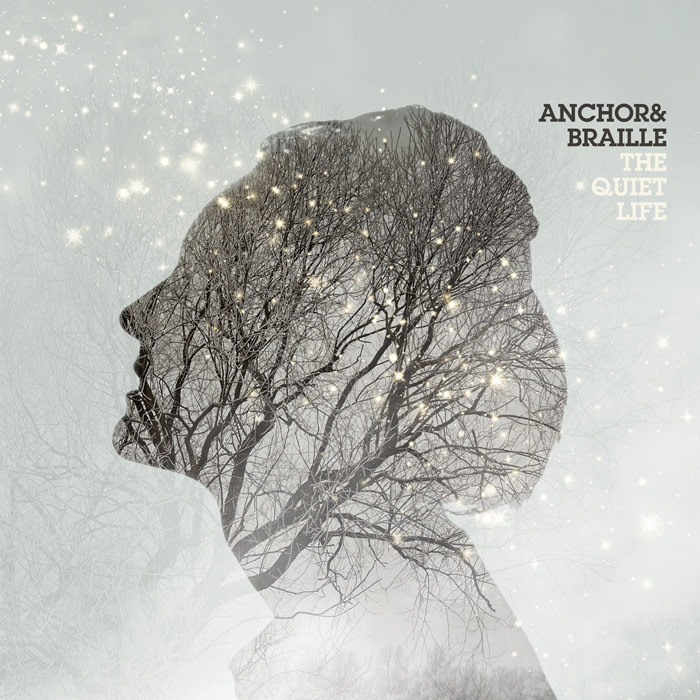
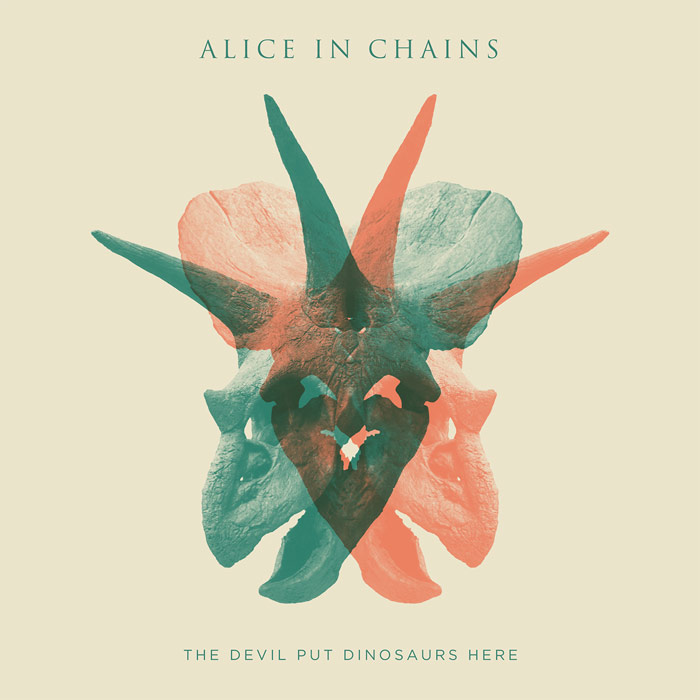
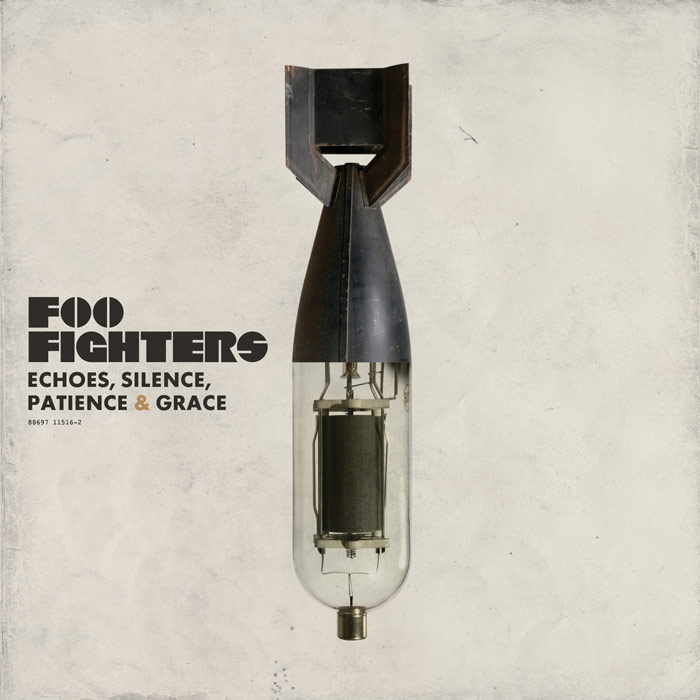
Do you feel a responsibility to contribute to something greater than yourselves?
Both: Yeah.
DC: When this is all over, there might be people who remember us for our work, but more importantly, how will we be remembered as people? The legacy as a father and husband trumps my legacy as an artist. We’re part of a bigger picture—one that we didn’t create.
RC: We’re both people of faith and we grew up in a Christian home. We had our tumultuous teenage years and came around to understanding Christianity for ourselves. It’s important to us to put a good face on something that, in the modern age, people have a bad taste in their mouths about. Because of that, how we treat our clients and how we work is important to us; we want to provide a service to the best of our ability.
DC: I think convictions play a large role in what we do, not only as artists, but in our faith and personal lives—I think we’re convicted to do the absolute best we can in every area of life. We’ve been shown so much grace, and I think we strive to be great because of that.
Are you creatively satisfied?
(both laughing)
DC: I hope that most artists answer no. Occasionally, but it’s always fleeting. You reach a moment when you release a project and you think it’s great, but as human beings we’re never satisfied—we don’t have that innate ability to satisfy ourselves to that point. As artists, it’s even more extreme. As soon as something that we’ve done comes out, I’m ready for the next thing.
RC: There’s always something on the burner. If client work stopped altogether, I’d have enough ideas to keep me busy on personal projects for at least the next three years.
DC: I’m extremely satisfied with my career and what we’ve been given, but I’m always yearning to do the next thing and make it better than the last.
RC: I’m satisfied with the work we’ve done thus far on a case by case basis: sometimes the work we think is going to be really great can take a nosedive, and sometimes work that doesn’t start out so great can turn out amazing. It’s case by case, and that’s why our portfolio only shows a fifth of what we’ve done—we’re really picky about what we put up there. But I’d say we’re occasionally satisfied. I would hope that every artist finds a few things they’re really proud of every so often, but when you do this full-time, some things are going to slip through the cracks and it’s going to be like, “Well, we’ll just call this one a paycheck.”
DC: It’s a tricky question. As artists, when we feel like we’ve made it, then it’s over—that’s the beginning of the end. We’re always trying to push ourselves and experiment on stuff that’s totally outside of our element.
RC: I don’t think either of us will ever say we’ve arrived.
DC: I hope not.
You guys have done a lot already. Are there things you want to work on that you haven’t explored yet?
DC: Yeah, I think about that a lot in regards to the direction of our company. We’re starting to design and release more of our own products into the marketplace. We’d like to become a design house that is known for our own products as well as the work we do for others. That’s the trajectory I see happening with IC. We just released our first actual toy line that we created with Uncle Goose; it’s a wooden toy product called Stack and Scare and it’s available in stores now. We have a handful of other things in the works for the new year.
RC: Both of us own our own projects for the most part. Stack and Scare was very much Don’s baby. Something I’ve been thinking about, but haven’t had time for in the last eight years is more clothing-based design. I could see myself putting more emphasis on that, even though I don’t know what kind of shape that would take. I’m also interested in jewelry as well.
DC to RC: You’re also in a few other bands.
RC: True. Yeah, this next year I’ll be announcing and working toward two non-Demon Hunter music projects that are vastly different. That’s another way to answer your question about being creatively satisfied—I’ve done metal music for almost 20 years and this will allow me to showcase some other things. I also get to work on the design for those and take a different approach than I would for the Demon Hunter artwork.
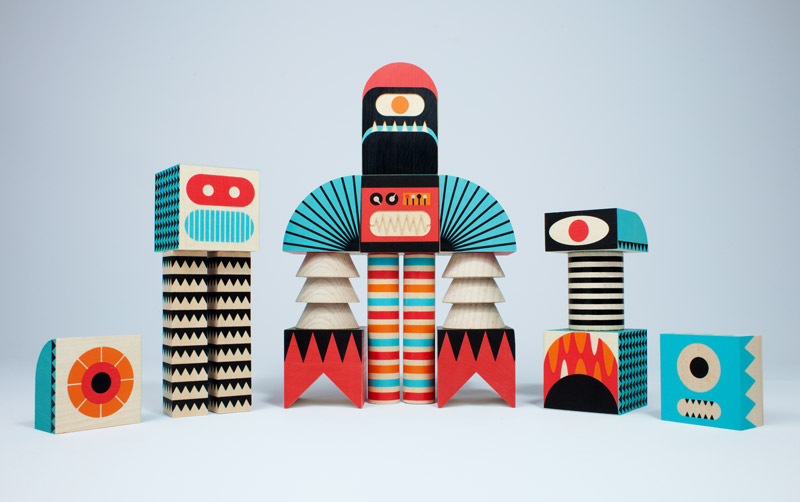
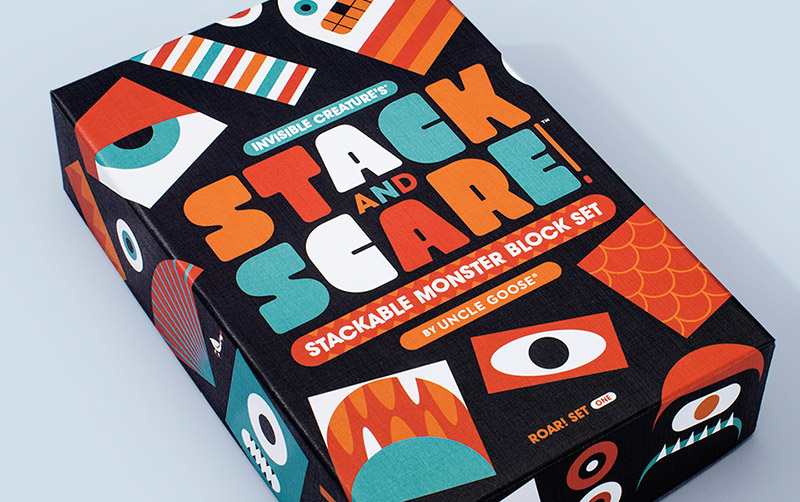
What advice would you guys give to a young person starting out?
DC: I think the biggest thing for us—and I always go back to our story, because it’s the only one I know—was the niche that we found in terms of design. It’s such a broad, vast, huge world. We get a lot of designers who say, “I like to draw. Where do I start?” There are so many questions to answer before that. What do you love? When there’s downtime, what do you like to do? When you go to the bookstore, what do you gravitate toward? Ryan and I loved comics and Thrasher Magazine and toys—and that was our niche, but maybe the next person just isn’t going to be into that culture. You could draw beautiful pictures all day long and be the best illustrator in the world—and maybe no one will ever see it or buy it. It’s a matter of getting your voice in front of the people who you want to be your audience. They sky is the limit now; if you have a great looking website and do great work, it will get passed around. That’s good news.
RC: As a side note to what Don is saying. You need to understand the world you want to be in. People who ask us questions sometimes seem to have not done any research. You just need to dive headfirst into that stuff. For us, it meant working with all different kinds of bands and understanding what it looked like to be an alternative band or a metal band or an indie-rock band. We were so immersed in that culture that we didn’t have to think about it or do much studying. It was, “Oh, I know what The Strokes’ t-shirts should look like. I know what a Butch Walker poster should look like.” We were just so into music in general. Dive in hard—into books, into stuff online, and into your community.
DC: Know who went before you, too. When I discovered modernism over a decade ago, it opened up this whole world for me. I found out about architects, designers, illustrators, and cartoonists; I then studied who inspired them and why the work looked simple, refined, and optimistic. You have to do your research, but what happens is we have Google now, and kids want to know the easy way to get there. I feel like you should have your head down and be doing what you love to be doing for at least five years before you even ask that question.
I think the second part of that question is being in front of the right doors. Now, they’re not necessarily going to open for you, but sometimes they will. Find a way to get to the door: reach out to people, be persistent—but your work needs to back it up.
RC: And be socially aware when you’re in front of those doors: don’t incessantly knock. I think people think if I just hound a company enough, then they’ll be hired. Design is a client-based world, and you need to be aware of your interactions with others.
DC: Yeah, crafting an email is almost as important as crafting an illustration.
How does living in Seattle impact your creativity?
DC: Good question. After high school, I came up here to take a tour of the Art Institute of Seattle—no knock on the school, but I’m glad I didn’t go. That was when I fell in love with Seattle. Before music, before everything.
RC: We took a family vacation up here around that time. My grandfather—the one who worked at NASA—and grandmother had a vacation home up here on the water. Our family usually only made day trips, but this was a long jaunt from Sacramento, and it was one of the biggest vacations we’d ever taken. I think Seattle stuck with us as this far away fantasy place.
DC: Also, growing up listening to music, the scene and the art culture of Seattle felt like home. So many of my favorite things had happened here, and I had to get here. We have talked about moving other places over the years, and it gets shot down each time. When we leave for a tour or work, we can’t wait to get home; part of that is obviously our families and the other part is the innate beauty here.
RC: It’s an ongoing inside joke that everyone who visits Seattle in the summer wants to move here, without a doubt—
DC: And then they’ll move away in the winter. (laughing)
RC: The cold weather lasts a while, and it drizzles a lot. If you can deal with that throughout the year, and look forward to the incredible spring and summer, then it’s worth it. There’s a lot of staying in and then a big payoff. The Northwest is just amazing, Seattle in particular, because we’re close to Portland, Vancouver, the mountains, and the beach.
DC: This has also been “the land of opportunity” for us. This is where the label gave us our first job, where we signed contracts, and we have a lot of clients and friends here. This is where we’ve put down our roots.
“You reach a moment when you release a project and you think it’s great, but as human beings we’re never satisfied—we don’t have that innate ability to satisfy ourselves to that point. As artists, it’s even more extreme. As soon as something that we’ve done comes out, I’m ready for the next thing.” / Don
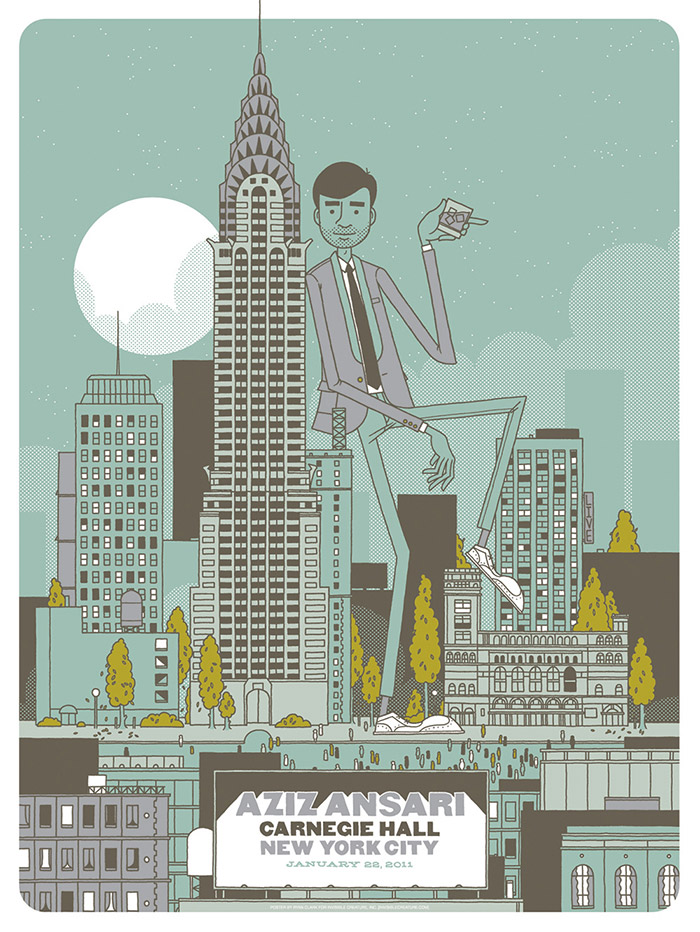
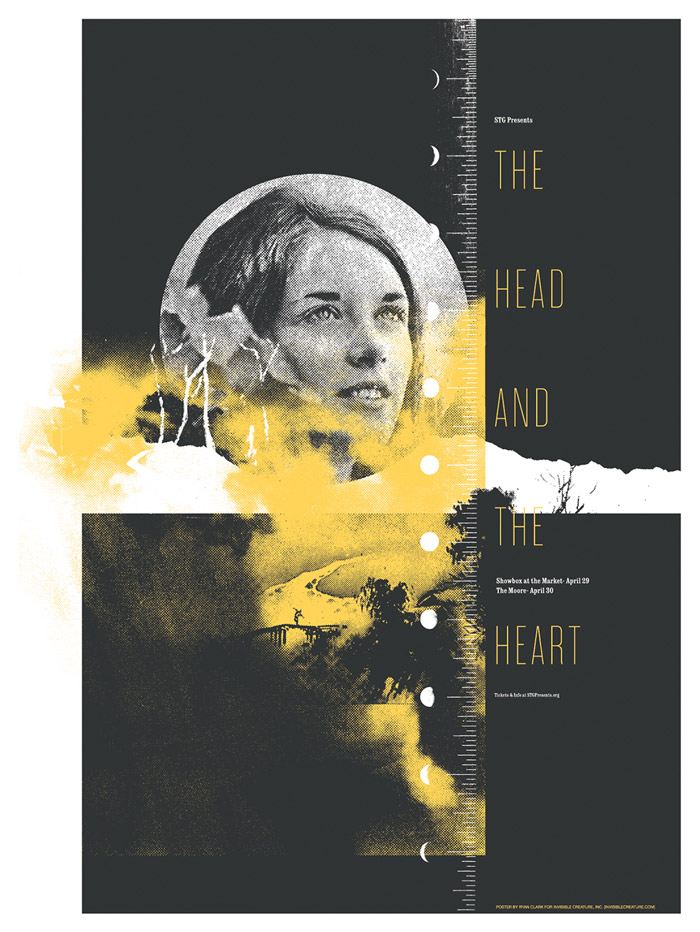
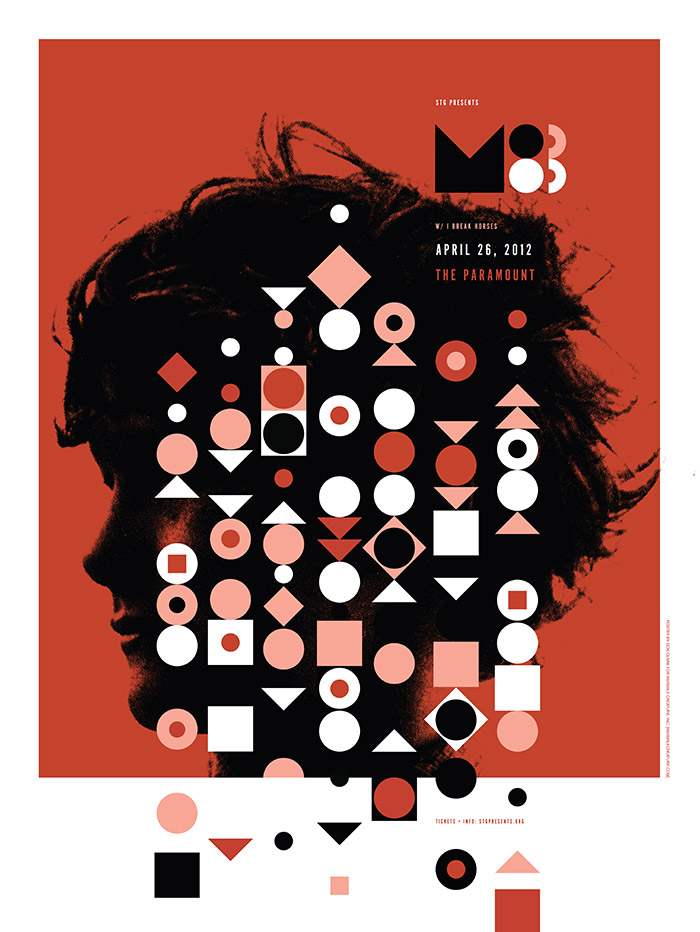
Is it important to you to be part of a creative community of people?
DC: Absolutely. It’s just the two of us and a junior designer. We’re looking at the things we’re creating all day long and we can become fairly secluded with our heads down all day. Honestly, social media has been great for us. Through Twitter and Instagram, we’ve met a huge community of designers. Outside of that, we meet up with friends and designers, many of whom we’ve met via the Internet, when we travel. It’s been great.
RC: Yeah, social media has been a huge tool for networking—that’s a lame word, but it’s true.
DC: It broadens your audience, but at the same time, I think it has brought the design community closer. We can see what others are working on and push each other. When you work for yourself, those are the things that are helpful.
What does a typical day look like?
DC: It’s probably different for both of us. I have three kids and we just purchased a farm on 10 acres, so we have animals and all the things that go with that. We get up at 6AM, I take the kiddos to school, either my wife or I will take care of the animals, and then I’ll get to work. My days are filled with beautiful chaos—busy work and busy family. Our kids are nine, seven, and two. I love it, but it can get a little crazy. It’s important to slow down and enjoy the little moments, which I work hard to do.
RC: Right now, we’re in the middle of converting an old barn into our new studio at Don’s farm. We’ve been working separately for the last couple months, but I go to Don’s every once in a while for camaraderie’s sake. I’ve had to make a conscious effort not to sleep in or work in my pajamas. I typically start work at 7–8am and sometimes I sit here for 10 hours without taking a break, except to use the bathroom. I’ll end work around 7–8pm and end the night with some TV. Other days I carve out completely for working on music. It just depends on what is happening.
DC: Right now, we meet about projects once a week and we talk all day long via Messages. About half of the day is spent on managing projects and doing admin stuff and the second half of the day is actually spent illustrating and designing. We’re constantly juggling a lot of different things, and it’s about focus, time management, delegating projects, and prioritization.
What music are you listening to right now?
RC: We do an annual Top Ten list on our blog. That’s probably what we’ve been listening to the most. My favorite record of the year was probably Editors’ The Weight of Your Love. I’ve also been listening to CHVRCHES a lot. My favorite band of all-time is Depeche Mode, so anything that fits into that realm is good. I say this a lot, but I don’t really listen to metal very often, which I think is good for the band. It helps us to not sound like most of what’s out there right now. I’m very seldom in awe of any current metal.
DC: My favorite album this year was Haim’s Days Are Gone, but Ryan and I have pretty similar tastes: a lot of electronic, a lot of British stuff, and I love hip-hop. Our top tens are pretty scattered among genres.
Your favorite movies and/or TV shows?
DC: I have three kids, so I don’t watch TV.
(all laughing)
DC: I can answer favorite movies: I’m a huge animation fan, so I like all the classic Disney films, like 101 Dalmatians, Cinderella, Sleeping Beauty, etc. Favorite movie of all-time? I’d probably have to say The Incredibles—beautiful animation and great storytelling. That movie changed the way I wanted to draw and the voice I wanted to have with my art.
RC: I’ll answer for TV. Lately: The Walking Dead, Game of Thrones, The Newsroom, Dexter—I’m okay with the ending, although it wasn’t the best.
Tina: I was disappointed.
RC: I finished that and Breaking Bad in the same week. The Breaking Bad finale was so good that it made the Dexter finale seem even worse.
I watch a lot of cheesy sitcom stuff, too. I’m very bummed out that The Mindy Project is getting cancelled, but very happy that New Girl is still on.
(all laughing)
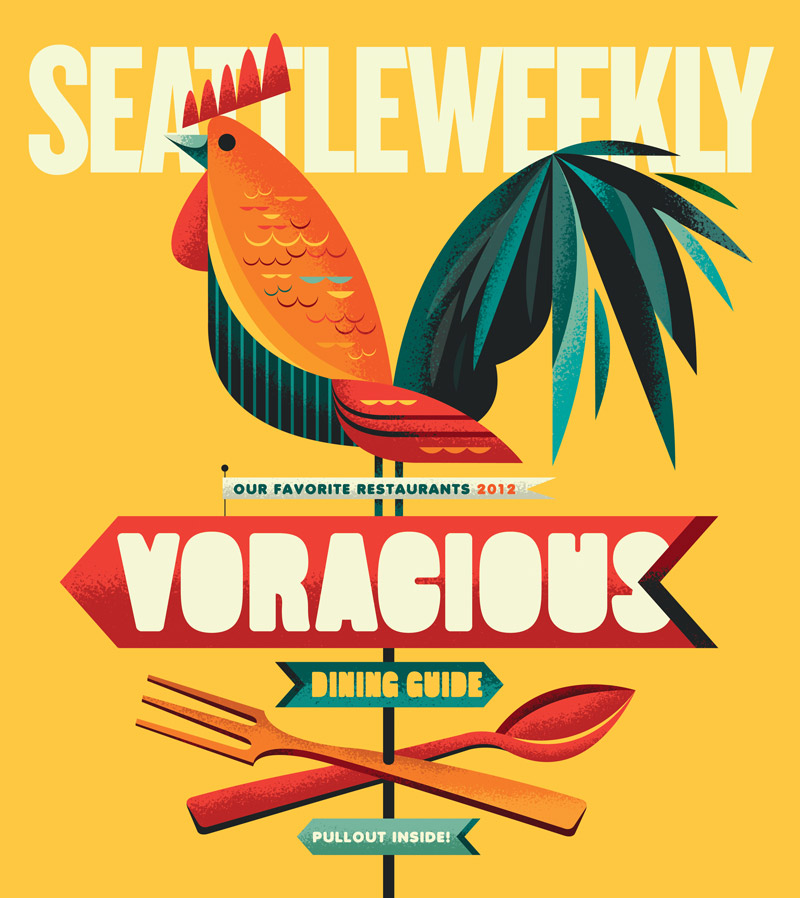
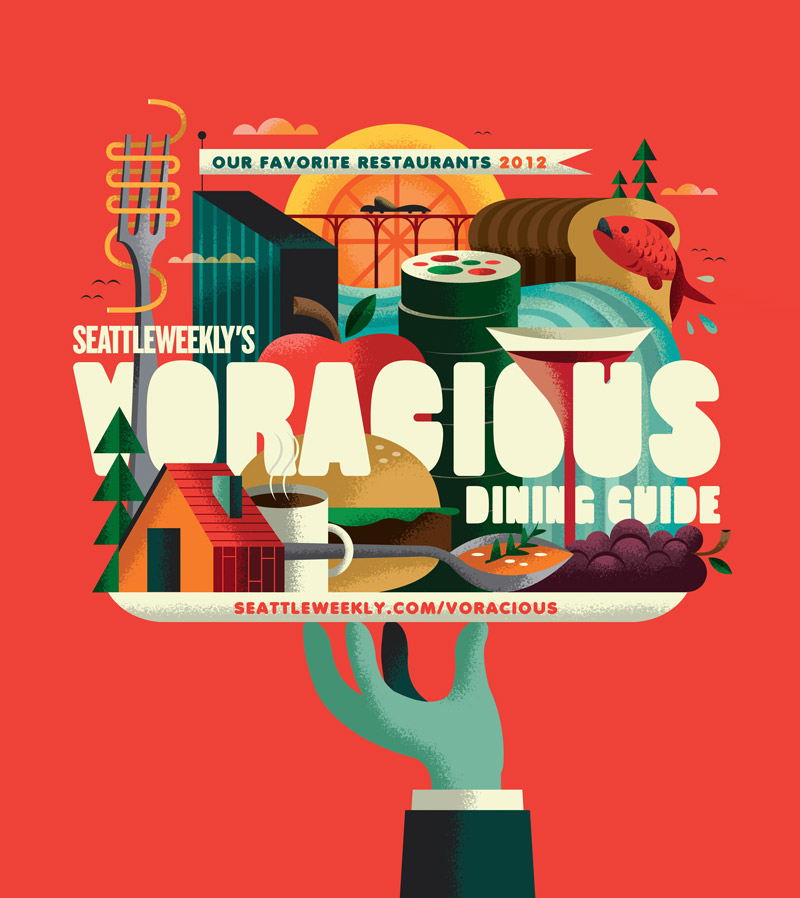
What are your favorite books?
DC: C.S. Lewis is one of my favorite authors. I just finished reading Every Good Endeavor by Timothy Keller and Rework by Jason Fried, which I loved.
RC: Do comic books count?
Sure.
RC: I was a big Ghost Rider fan for a long time, until Nicolas Cage ruined it. (laughing) I’m just going to come out with it—I love writing, but I don’t like reading much. I’ve read a handful of books (Don laughing at Ryan) and I’ve probably said that I’ve read more books than I have. The last book I read was Hell’s Angels by Hunter S. Thompson, which was pretty good. I’m more of a magazine or comic book guy if I’m gonna go the printed route.
Well, we’ll move on to a question related to something that you definitely do. What is your favorite food?
RC: I actually don’t eat. (laughing)
DC: Aside from dessert, I’d say I like Mexican food the best. There’s an amazing taco shop by our old studio in Queen Anne called Melina’s that we used to frequent way too much.
RC: I’m in the same boat. And I’m very not picky about Mexican food. I do love authentic Mexican food, but my friends make fun of me because I also love Taco Bell.
(all laughing)
Ryan: Nice! That’s my guilty pleasure.
RC: Yeah, it almost feels dirty, especially at this age. Honest to God, when my wife is out of town, I’ll go to Taco Bell.
Tina: That’s what Ryan does, except now that we live in New York City, he doesn’t go to Taco Bell because he doesn’t want people to see him.
Ryan: But whenever we leave the city and go to the suburbs, I get Taco Bell.
(all laughing)
Alright, the last question. You guys touched on this earlier, but what kind of legacies do you hope to leave?
DC to RC: I’ll let you go first.
RC: Well, like Don said earlier, I think the kind of person you are trumps the work you do. Obviously, there are some people whose work totally transcends whatever kind of horrible person they were; if you do really incredible work, you can be as crazy as whatever and your work will live on forever. But I think most people would prefer to be a person of character and integrity.
I want to be someone who stood by his beliefs and made what has become a taboo thing in our culture—Christianity—be more relatable to people. The closest example I can think of is Johnny Cash. He led a rugged life, but he was real and appealing, and there was this element of relatability to him—
DC: There was no distinction between sacred and secular.
RC: Yeah. I mean, he is revered by Norwegian black metal artists, but he was also a blatant Christian. Being the kind of person whose art is so transcendent that it tears down walls between what people believe or the kind of life they lead is what I aspire to; I want to make it a more relatable, real, and honest thing for people, whether they believe similarly or not.
DC: I do think art has given us a unique platform. Timothy Keller has a quote that basically says, “If you excel in the arts—or your vocation—no one cares what you believe.” That may be an oversimplification, but I think he’s right.
From a purely ecclesiastical standpoint, all of this will eventually be over and everything I’ve created will be gone. Selfishly, I hope to create work that is timeless. I want the things I design to look great on the shelf or wall in 50 years or to evoke a sense of nostalgia and a certain memory in people. But when I come home from work, I’m no longer an artist or business owner—I’m not anything but Daddy. My kids don’t care what I do for a living. So, in terms of art, my legacy is a selfish one, and my legacy as a person is something that will live on through my children, my family, and, hopefully, the people we inspire.
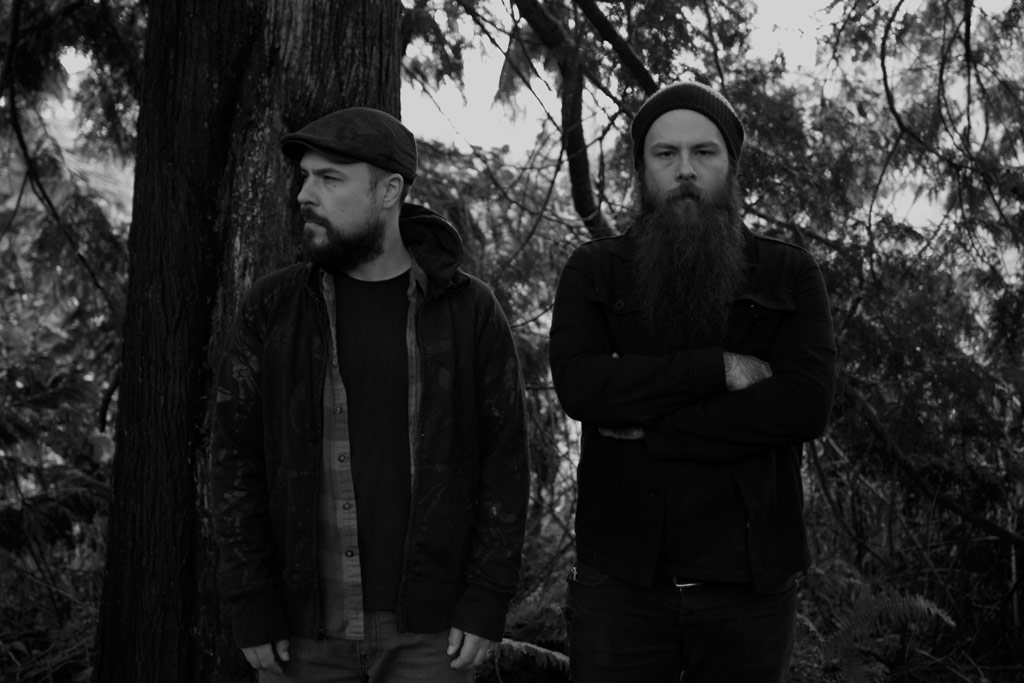
“Being the kind of person whose art is so transcendent that it tears down walls between what people believe or the kind of life they lead is what I aspire to…” / Ryan
